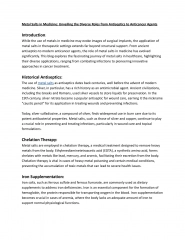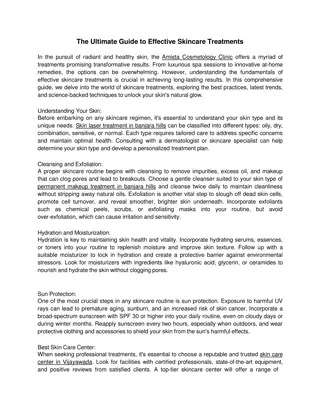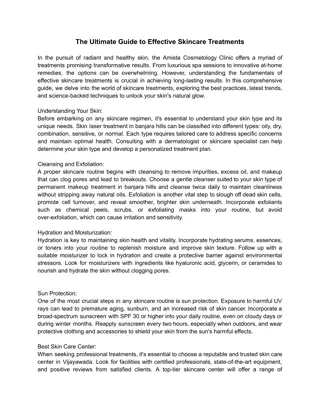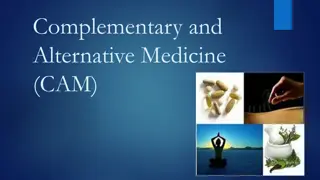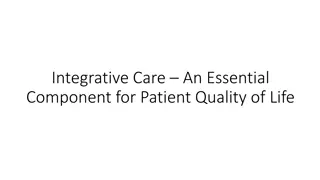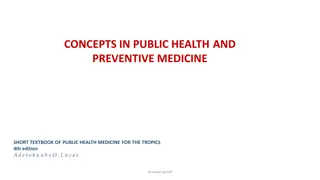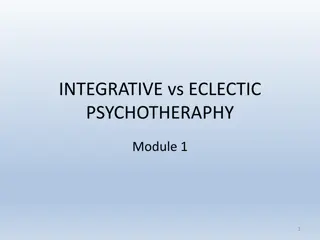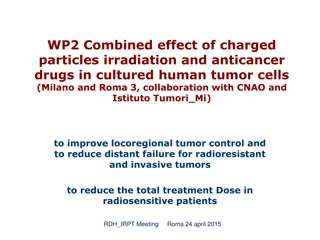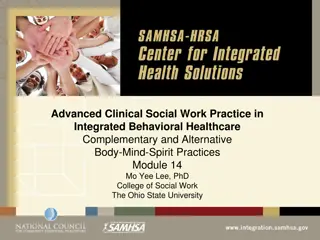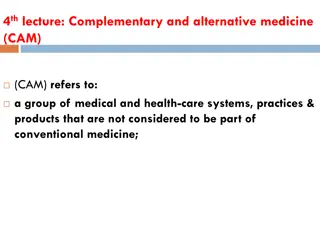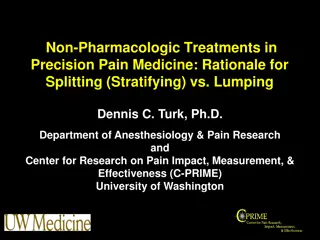Patients Refusing Anticancer Treatments and Integrative Medicine
This study conducted in Italy aimed to clarify reasons behind cancer patients refusing conventional treatments and the impact of complementary and integrative medicine on their decision-making. Examining patient demographics, treatment refusals, reasons for refusal, and outcomes provides insights into patient attitudes towards cancer therapies.
Download Presentation

Please find below an Image/Link to download the presentation.
The content on the website is provided AS IS for your information and personal use only. It may not be sold, licensed, or shared on other websites without obtaining consent from the author.If you encounter any issues during the download, it is possible that the publisher has removed the file from their server.
You are allowed to download the files provided on this website for personal or commercial use, subject to the condition that they are used lawfully. All files are the property of their respective owners.
The content on the website is provided AS IS for your information and personal use only. It may not be sold, licensed, or shared on other websites without obtaining consent from the author.
E N D
Presentation Transcript
Behavioral and Social Science Research Behavioral and Social Science Research NIMH Division of AIDS Research NIMH Division of AIDS Research Dianne Rausch, Ph.D. Dianne Rausch, Ph.D. Director, Division of AIDS Research, National Institute of Mental Health @NIMHgov Share your thoughts on this presentation with #IAS2019 #IAS2019 Share your thoughts on this presentation with
DISCLAIMER DISCLAIMER No conflicts of interest
NIMH Division of AIDS Research NIMH Division of AIDS Research The Division of AIDS Research (DAR) supports research to reduce the incidence of HIV/AIDS worldwide and to decrease the burden of living with HIV. Mental Health Mental health is integral to prevention and treatment efforts across the lifespan Behavioral Neuroscience Social Science Cognitive function Pathogenesis Cure Therapeutics Prevention cascade Treatment cascade Translation and implementation Biomedical intervention 4
NIMH Division of AIDS Research NIMH Division of AIDS Research OAR Research Priorities Develop Next- Generation HIV Therapies Comorbidities, Coinfections, and Complications Reduce the Incidence of HIV Research Toward HIV Cure Cross-Cutting Areas National Institute of Allergy and Infectious Diseases (NIAID) National Institute of Child Health and Human Development (NICHD) National Institute of Drug Abuse (NIDA) National Institute of Mental Health (NIMH) National Heart, Lung, and Blood Institute (NHLBI) Many Other ICs NIMH/DAR partners with trans-HHS colleagues to reduce the incidence of HIV/AIDS worldwide and to decrease the burden of living with HIV/AIDS. 5
Mental Illnesses Cognition Comorbidities Well-being Adherence Risk Individual Behavior Key Populations Empowerment Counseling Testing U=U Condoms Identity Technology Disparities Quality Attendance PrEP Retention Awareness Depression Outreach Disclosure Mental Health and HIV Stigma Violence Interpersonal Factors and Structural Determinants Emotional and Mental Health Culture Resources Sex Workers Relationships Beliefs Ethnicity Race Communication Youth Infants Migrants Sexual and Gender Minorities Economics Social Networks Global Food Insecurity Incarceration Adults Adolescents Mothers 6
BSSR Functional Framework BSSR Functional Framework Social Networks Community & Work National & State Global & Economic Biological Individual Family HIV/AIDS Prevention, Care, and Cure Supported by BSSR Domains Elemental BSSR Integrative Supportive BSSR BSSR Modifying vulnerable behaviors and environments Basic BSSR: Understanding vulnerable populations and environments Strengthening biomedical product acceptability Implementation of combination strategies Graphic adapted from: Gaist & Stirratt, 2017, JAIDS
Violence and HIV Violence and HIV Types of Past and Current Violence Childhood Abuse Intimate Partner Violence Community Violence Among people at risk or living with HIV, trauma is associated with: Priority Populations Poor retention in prevention and treatment care continua HIV VIOLENCE Sexual and Gender Minorities Child- bearing Women Sex Workers Adolescents Poor adherence to PrEP or ART reduced viral suppression Research Gaps Co-occurring Conditions Modifiable Mechanisms Intervention Development
HIV HIV- -related Health and Social Impacts: Stigma related Health and Social Impacts: Stigma Incidence, adherence, retention, morbidity, mortality, quality of life, social exclusion Outcomes Organizations and Institutions Affected Populations Manifestations Stigma Experiences Stigma Practices Stigma Marking Race, gender, sexual orientation, occupation, class- related stigma HIV-related stigma Intersecting Stigmas Drivers & Facilitators Individual Interpersonal Organizational Community Public Policy Adapted from: Stangl, A. L., Earnshaw, V. A., Logie, C. H., van Brakel, W., Simbayi, L. C., Barr , I., & Dovidio, J. F. (2019). BMC medicine, 17(1), 31. 9
Community Engagement Community Engagement Global Stakeholders National Stakeholders Broader Stakeholders Community Stakeholders Trial Participant Family, friends, CBOs, CABs, Peers NGOs, policymakers, professionals Ministries of Health, media, funders NGOs, WHO/UNAIDS, NIH, foundations Adapted from: AVAC (2012) GPP Guidelines for Biomedical HIV Prevention Trials 2011 10
Global Mental Health in HIV and Beyond Global Mental Health in HIV and Beyond There is no health without mental health Task shifting and/or sharing and use of paraprofessionals Differentiated care/stepped care approaches Collaborative care to support the integrated care delivery Use of digital health/mobile technologies to support care delivery Use of transdiagnostic approaches to address multiple mental disorders in the same interventions Research Partnerships for Scaling Up Mental Health Interventions in Low- and Middle-Income Countries
Current DAR Research Priorities Current DAR Research Priorities Emotional and Mental Health Individual Behavior Development, Testing, Use, and Impact of Biomedical HIV Prevention, Treatment, and Cure Strategies Mental Health Comorbidities in HIV Prevention and Treatment Implementation Research for Screening and Treatment for Mental Disorders Advancing Differentiated Care for Adolescents and Young Adults Interpersonal Factors and Structural Determinants Advanced Epidemiological Modeling Addressing the Impact of Violence on HIV Prevention and Treatment Understanding and Reducing Stigma to Improve the HIV Prevention and Care Continua
Thank you drausch@mail.nih.gov


